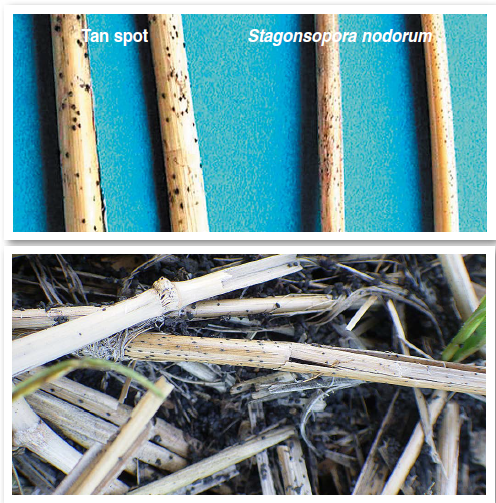Fungicides are available for early and late-season management of leaf spot diseases. Tank mixing a fungicide and herbicide for a four to six-leaf stage application is a common practice in North Dakota.
NDSU research has shown modest (2 to 6 bushel) yield responses with the application of reduced rates of fungicide for early season tan spot when: (1) wheat was planted into wheat residue, (2) a susceptible to moderately susceptible variety was grown and (3) spring rains and cool weather favored disease development. Early season fungicide application is not recommended in the absence of disease or in an unfavorable environment.
Several fungicides are labeled for the management of tan spot and the Septoria complex, and recommendations are found in the “North Dakota Field Crop Plant Disease Management Guide.” Another source of information is the fungicide efficacy table organized by the North Central Regional Committee on Management of Small Grain Diseases (NCERA-184) and can be found on the NDSU Extension plant pathology website.
Foliar fungicides may be applied with aerial or ground equipment. Five gallons of water per acre is recommended for air; ground application generally requires 10 to 20 gallons of water per acre.
This publication was authored by Marcia McMullen, retired NDSU Extension plant pathologist, and Tika Adhikari, former NDSU wheat pathologist.
For more information on this and other topics, see www.ndsu.edu/extension.










